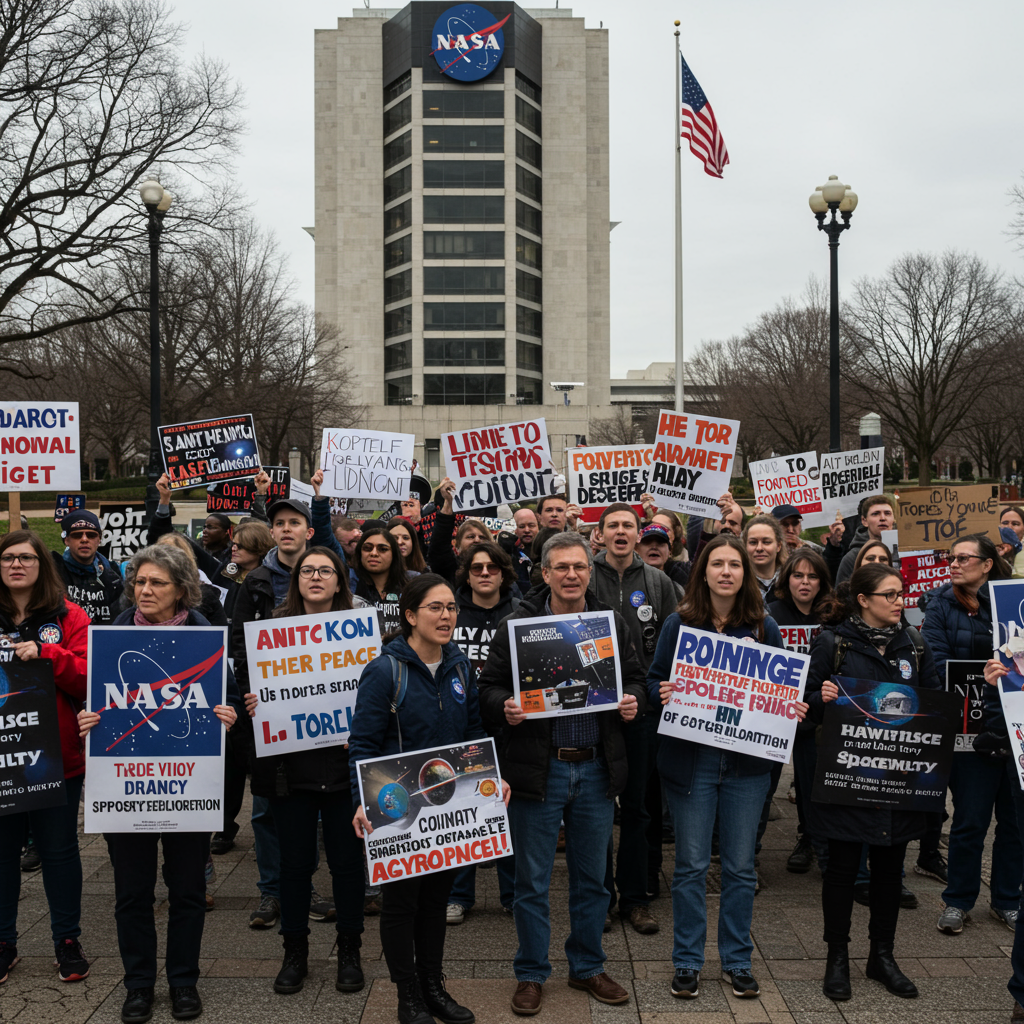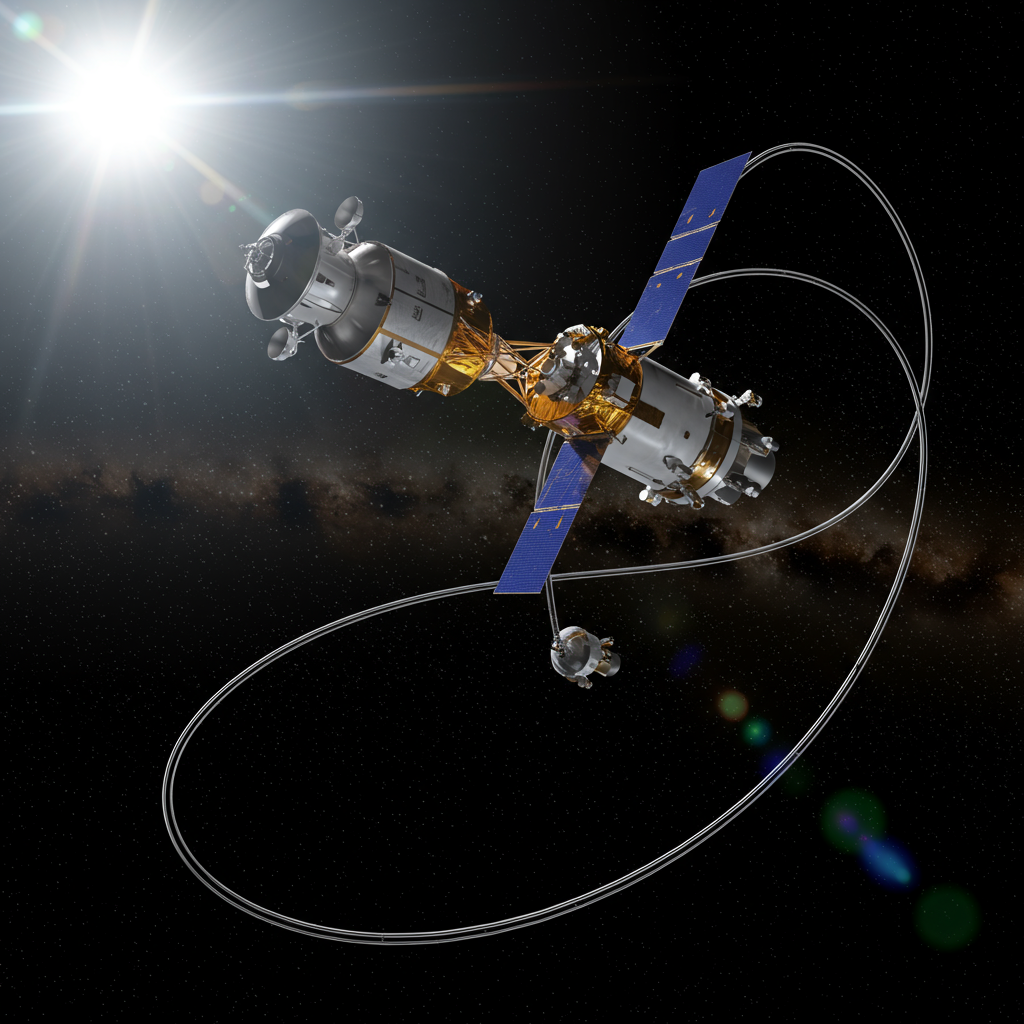Public outcry often highlights critical moments in policy debates, but what happens when organized voices remain silent? A recent protest held at NASA Headquarters underscores a sharp divide between passionate citizen activism and the perceived inaction of established space advocacy groups during a period of significant budget uncertainty. This event, occurring amidst wider public demonstrations concerning federal spending and priorities, raised questions about the role and responsibility of organizations claiming to represent the space community.
Citizen Voices Rise Against NASA Budget Cuts
On a specific date in late June 2025, a group of concerned citizens gathered outside NASA Headquarters. Their purpose was clear: to voice opposition to proposed cuts impacting the agency’s budget. These individuals, motivated by a commitment to space exploration, scientific research, and the jobs supported by the space sector, felt compelled to take direct action. Their presence represented a grassroots effort to push back against decisions they believed would hinder America’s progress in space and negatively affect countless lives and livelihoods. This action was a physical manifestation of public concern, a direct appeal made visible on the ground.
The protest took place during a period characterized by heightened public engagement and dissent regarding government spending priorities. For instance, just weeks prior, thousands participated in “No Kings” protests across Colorado, demonstrating against various administration policies and budget directions. These widespread rallies, among the largest in that state in years, show a broader climate of public willingness to demonstrate and voice grievances against federal actions perceived as harmful. Similarly, national discussions around proposed cuts to programs like Medicaid revealed significant public opposition, with polls indicating high favorability for such programs even among different political groups. This context suggests a general public sensitivity to budget decisions impacting valued programs and a propensity for citizens to make their opposition known.
The Curious Absence of Key Advocacy Groups
Despite the tangible efforts of these citizen protesters, a notable silence came from prominent space advocacy and industry groups. Organizations like The Planetary Society, often seen as leading voices for space interests, reportedly failed to acknowledge, mention, or support the NASA Headquarters protest in any meaningful way. This perceived lack of engagement stood in stark contrast to the energy displayed by the individuals who showed up in person.
The author of the original piece specifically questioned this detachment. While acknowledging that groups like The Planetary Society engage in other forms of advocacy, such as gathering petition signatures (a recent effort garnered over 20,000), the critique centered on the disconnect between such activities and showing solidarity with direct citizen action. Petitions, particularly those including non-U.S. residents, were viewed as potentially less impactful on Capitol Hill lawmakers primarily focused on American constituents. The core issue raised was the failure of these organizations to embrace the principle that a “rising tide lifts all boats” or “united we stand.” Instead, it was argued, some groups appeared focused on specific parts of the budget or their own perceived unique role, rather than uniting with broader efforts impacting the entire space sector.
Why the Silence? Exploring Potential Reasons
Several factors might contribute to established advocacy groups opting for silence or distance from direct public protests. One explanation, suggested in commentary on the original article, points to a pervasive fear among organizations and individuals of potential repercussions from the administration, sometimes described in stark terms like being “deathly afraid.” This climate of apprehension could understandably lead groups to adopt more cautious, less confrontational tactics.
Another perspective offered was the nature of the protest itself. Concerns were raised about the visual branding or perceived “unprofessional and politicized graphic design” associated with the event. Advocacy groups striving to present science and space as non-political and broadly human may worry that aligning with visuals seen as “childish cartoons” or overtly partisan could damage their credibility and effectiveness in lobbying a diverse range of policymakers. Maintaining a non-partisan image is often a strategic choice for organizations aiming to influence across the political spectrum.
Furthermore, the sheer scale and complexity of federal budget negotiations present significant challenges. As seen in state-level examples, like the contentious debates in Minnesota over healthcare access for undocumented adults within their budget process, securing legislative wins often involves difficult compromises. Advocacy groups are constantly engaged in complex lobbying efforts behind the scenes, prioritizing specific battles they believe they can win. They might view public protests as potentially disruptive to these delicate negotiations or prefer to channel resources into targeted legislative pressure.
Broader Context of Budget Battles
The NASA budget discussion occurred within a wider political landscape where federal spending was a major point of contention. Proposed large-scale cuts to programs like Medicaid, aiming to fund other priorities like tax cuts and border spending, illustrated the intense pressure on federal budgets. While Medicaid enjoys high public favorability, efforts to significantly cut its funding were unpopular with the majority of Americans, highlighting public resistance to reducing support for established programs. This mirrors, in principle, the public’s potential resistance to cuts affecting NASA, a widely admired agency.
Similarly, the challenges within Congress itself, as highlighted by internal debates even on seemingly bipartisan issues like allowing proxy voting for new parents, demonstrate the difficult environment for advancing any agenda, including space funding. Successfully navigating this requires strategic effort, but the question remains whether excluding grassroots energy from that strategy is effective or detrimental.
Ultimately, cuts to any part of the federal space budget have ripple effects. They impact not just specific missions or programs, but also jobs across the country, the development of future technologies, and America’s standing in the world of science and exploration. This impact extends beyond the immediate space sector to affect potentially “all Americans,” as the original author noted. The disconnect highlighted by the protest is the perceived failure of established advocacy groups to fully champion this broader, unified cause alongside passionate citizens.
The Role of Public Action vs. Formal Advocacy
The event at NASA Headquarters prompts reflection on the optimal strategies for influencing policy. Formal advocacy groups possess lobbying power, expertise, and established relationships in Washington D.C. They engage in detailed analysis, direct meetings with lawmakers, and organized campaigns like petitions. This professional approach is crucial for navigating the complexities of government.
However, public protests and grassroots movements bring a different, often essential, element: visible public will. They generate media attention, demonstrate the depth of feeling on an issue, and can motivate wider public engagement. They represent the constituents that lawmakers ultimately answer to.
The tension arises when these two forms of advocacy do not align or support each other. While petitions signal broad support, a physical demonstration sends a powerful message about the intensity of that support and the willingness of citizens to actively participate. The author’s critique suggests that by ignoring the protest, advocacy groups missed an opportunity to amplify their message and show policymakers that their concerns are shared by active citizens willing to take to the streets. Integrating grassroots energy with professional lobbying could potentially create a more potent force for influencing policy outcomes related to NASA and the broader space sector.
Frequently Asked Questions
What was the core issue motivating the NASA Headquarters protest?
The protest at NASA Headquarters in late June 2025 was primarily motivated by opposition to proposed cuts to NASA’s budget. Citizens gathered to visibly demonstrate their concern that reducing funding would harm space exploration, scientific research, and the jobs associated with the space sector, hindering America’s progress and global position in space.
Why were space advocacy groups criticized for their response to the protest?
Space advocacy groups, such as The Planetary Society, faced criticism for their apparent silence and lack of support or even acknowledgement of the protest. Critics argued that these groups, despite engaging in other forms of advocacy like petitions, failed to show solidarity with citizens undertaking direct, visible action. This was seen as a missed opportunity to unite grassroots energy with formal lobbying efforts and demonstrate a unified front against budget cuts impacting the entire space community.
How does this specific protest fit into the broader context of U.S. budget debates in 2025?
The NASA budget protest occurred during a period of widespread public concern and activism regarding federal spending and priorities in the U.S. In June 2025, there were larger protests (“No Kings”) against administration policies, and intense public debate about proposed cuts to major programs like Medicaid. The NASA protest, while specific to space, reflected a broader climate of public resistance to budget reductions and a willingness among citizens to publicly voice their opposition to government decisions impacting valued programs.
In conclusion, the NASA Headquarters protest served as a poignant reminder of the diverse ways citizens engage with policy and the sometimes-strained relationship between grassroots activism and established advocacy organizations. While challenges exist in coordinating efforts and maintaining strategic focus, the event highlighted the potential power of unified action and raised important questions about how best to champion the future of space exploration in a complex political landscape marked by significant budget pressures. The calls for citizens to speak out, even as organized groups remained quiet, underscore the enduring importance of public engagement in shaping national priorities.




